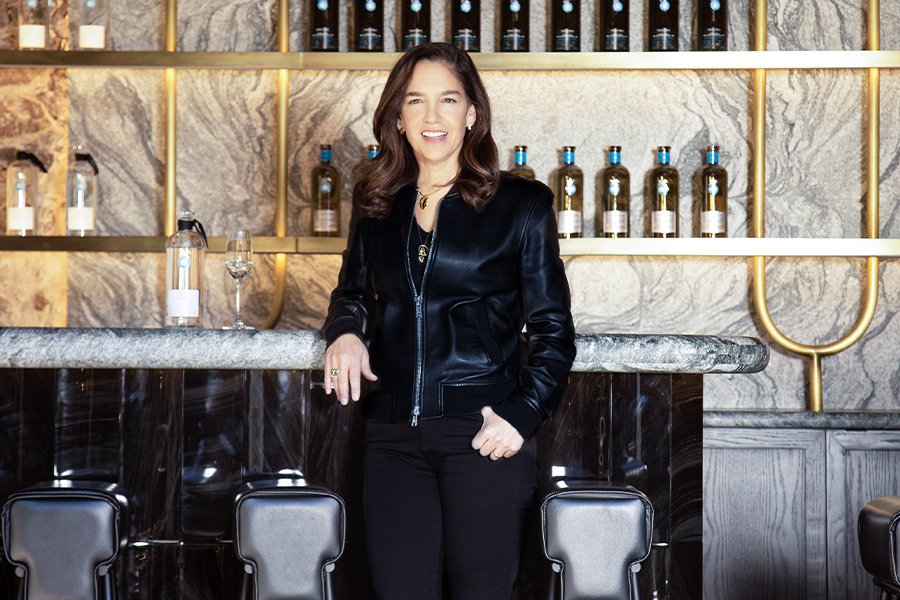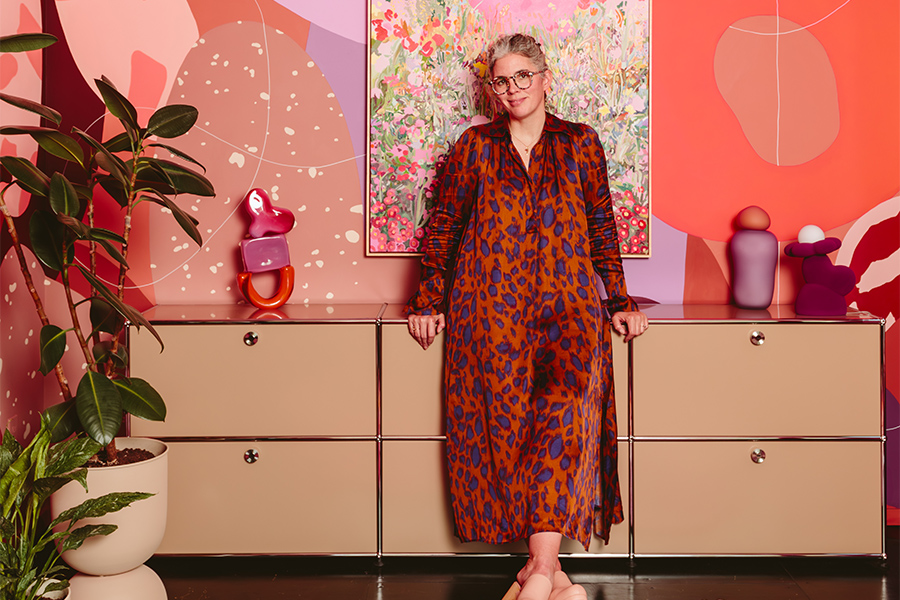Through immersive material practices and deeply personal explorations, artists Anne Lindberg, Zohra Opoku, and Marela Zacarías each reimagine abstraction as a space for transformation.
Whether through the layered symbolism of secondhand textiles, the delicate tension of cotton threads, or fluid sculptural forms shaped by memory and nature, their work embodies a kind of alchemy. These artists tap into the unseen—connecting body and land, past and present—to create objects that resonate and transcend.
Anne Lindberg
 The entrancing interplay between fog and sun over the wetlands of Upstate New York inspires a series of luminous new works from Anne Lindberg. In addition to pastel and acrylic pieces on paper, Lindberg also enriches Bienvenu Steinberg & C gallery with the hypnotic cotton thread sculpture Inhaling Color. Stretching more than 16 feet, the work reflects the practice at the heart of Lindberg’s catalog: drawing in space. “I generally call all of the work a form of drawing, whether it’s two- or three-dimensional,” she says.
The entrancing interplay between fog and sun over the wetlands of Upstate New York inspires a series of luminous new works from Anne Lindberg. In addition to pastel and acrylic pieces on paper, Lindberg also enriches Bienvenu Steinberg & C gallery with the hypnotic cotton thread sculpture Inhaling Color. Stretching more than 16 feet, the work reflects the practice at the heart of Lindberg’s catalog: drawing in space. “I generally call all of the work a form of drawing, whether it’s two- or three-dimensional,” she says.
Threads connect from staple points on two walls to form the matrix, requiring a correspondence between Lindberg and a partner to build the sculpture based on a grid outline. “That diagram keeps us going, keeps us communicating, and it maps the changes of density within this area,” Lindberg says.
Color is paramount and chosen with each installation space in mind. “The color choices happen as I’m building,” Lindberg adds. “Every space is so different in terms of its quality as of light and viewpoints and scale.” The optical condition of Inhaling Color is crafted to reach and embody the innate transcendence in the viewer. “The minute you move your head, the piece appears to move. It’s sort of ungraspable, and that optical color condition greets you in your gut and your eyes first,” she says. “Your body responds to it. The analytical questions come later.”
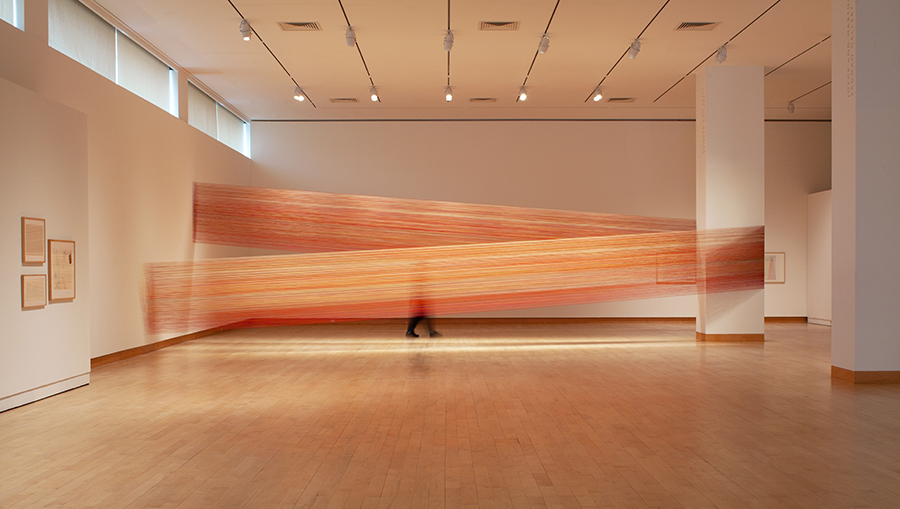
Impossible Red tells the powerful story of the bold hue
Zohra Opoku
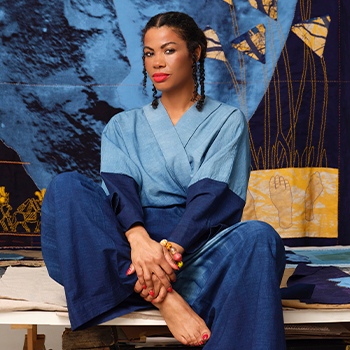 Across a distinctive multimedia catalog, Zohra Opoku proves herself as much an alchemist as an artist. Works like her recent project, The Myths of Eternal Life, explore the restorative rewards of transformation. “The moment of trauma and fear has transformed into something striking in my practice and pushed my thinking to a level that created such a beautiful artistic outcome,” she says.
Across a distinctive multimedia catalog, Zohra Opoku proves herself as much an alchemist as an artist. Works like her recent project, The Myths of Eternal Life, explore the restorative rewards of transformation. “The moment of trauma and fear has transformed into something striking in my practice and pushed my thinking to a level that created such a beautiful artistic outcome,” she says.
Further, Myths comprises four chapters of collage-style work composed of screenprints, embroidery, and linen sack—a new medium for Opoku. Ancient Egyptian mythology and X-ray images inform the piece, which also depicts photos of Opoku’s own body. Such material combinations have deepened her longstanding relationship with textiles, advancing to new possibilities like printing on fabric. “The material literally absorbs the photographic image, demonstrating how in society material can become imbued with meaning, memories, and histories over time.”
Secondhand textiles are foundational to Opoku’s art and imbued with honesty, as she often sourced from her own family. “It has to feel authentic and inhabit memories that speak to the soul of the work,” she adds. “Fabrics speak my language of expression.” Opoku seeks to honor the legacies of female artists who came before her as well as the dynamic work of the avant-garde movement, but African craftsmanship inspires her most of all. “The works represent an embrace,” she says, “something timeless that humans will always need: a spiritual energy, a sensuality, a friend. Most importantly, the work can transcend. It has the energy of never dying, which I believe is the incarnation of Africa.”
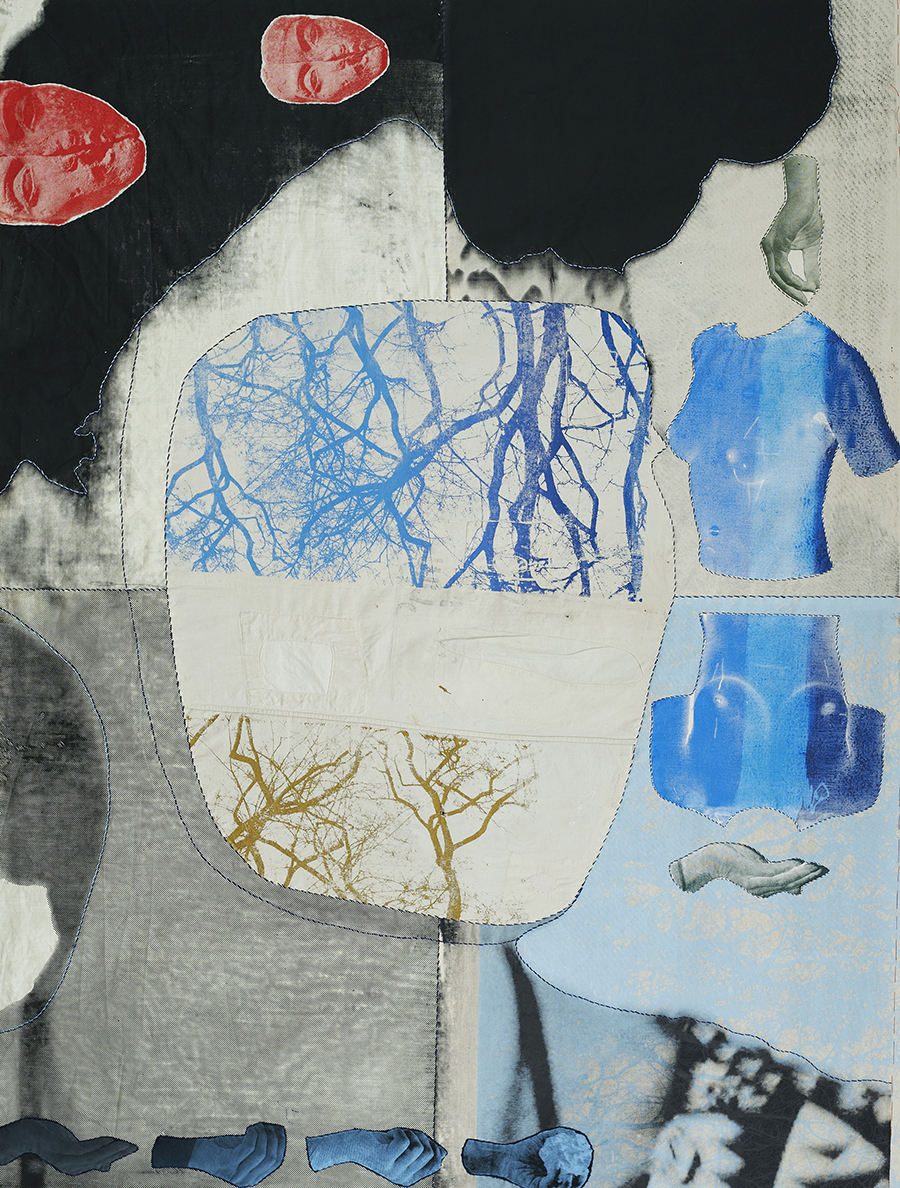
I Have Arisen is part of a series that stitches past and present
Marela Zacarías
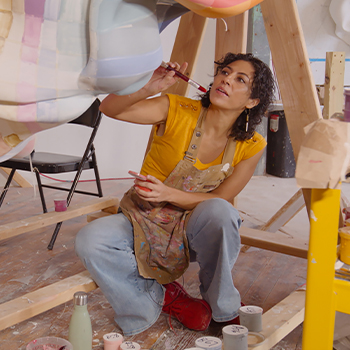 Featured in Woven Abstractions at Bienvenu Steinberg & C in New York, new sculptures by Marela Zacarías are 15 years in the making. More than a decade of study and experimentation has unlocked new potentials in the Brooklyn-based artist’s sculptural medium by “letting it speak and letting it lead me into different ways of learning,” she says.
Featured in Woven Abstractions at Bienvenu Steinberg & C in New York, new sculptures by Marela Zacarías are 15 years in the making. More than a decade of study and experimentation has unlocked new potentials in the Brooklyn-based artist’s sculptural medium by “letting it speak and letting it lead me into different ways of learning,” she says.
Zacarías’ materiality of wood, wire mesh, plaster, and acrylic paint yields organic forms as immersive as ever. Embodying both modernist and feminine sensibilities, the work remains as accessible as it is capacious. “I’ve done a lot of work looking at nature and its forms and colors, trying to find the voice of the sculpture,” Zacarías says. “It looks like it is breathing, it’s moving.”
Abstract expressionism as well as Mayan and Mediterranean textile traditions have long inspired Zacarías, but nature is her enduring muse. Take a 2022 installation at Seattle-Tacoma airport, where a series of suspended sculptures adorn colors evocative of a regional palette, from the Olympic Peninsula to the San Juan Islands. “It’s always important to bring the right ingredients in the space to sometimes create a little tension with history,” she says. “It needs to be inviting because I do feel like these works are more about connecting and welcoming.”
The bold work is also personal, and Zacarías’ cathartic time in studio promises the same redemptive power as it does for the viewer. “When I get here, it’s like it gets out and gets transformed,” she says. “Anxiety gets transformed, pain gets transformed, happiness—all of it gets in there and becomes this new object.”
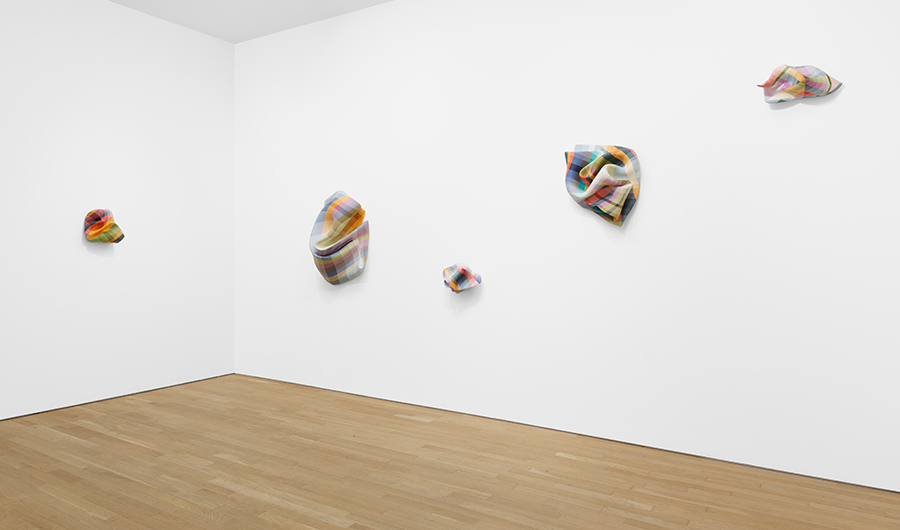
Part of Woven Abstractions, colorful sculptures adorn the walls at Bienvenu Steinberg & C in New York
Photos by Derek Porter and Deb Leal, and courtesy of Anne Lindberg, Zohra Opoku, and Marela Zacarías
This article originally appeared in HD’s August 2025 issue.

